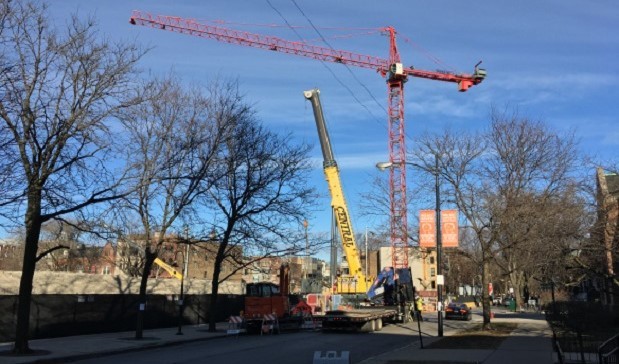
CHICAGO—Builders throughout much of the nation struggled with higher construction costs in 2017. And many agree that an acute shortage of skilled labor was the chief culprit. The overall outlook for commercial real estate in 2018 remains positive, but that shortage will continue posing a threat to further growth.
“The cost of construction has risen significantly, even compared to pre-downturn levels,” Chuck Taylor, director of operations for Lemont, IL-based Englewood Construction, tells GlobeSt.com. To keep its construction projects on schedule, the company has been using large-scale subcontractors on some job sites, even ones from hundreds of miles away, as many smaller, local operators are overcommitted. Not all firms have this capability, however, and “that forces many projects into overtime situations.”
Although these concerns are national in scope, not every region faces the same difficulties. “In Chicago we don't have as much of an issue,” Taylor says. “But in many areas, such as Detroit, they have never recouped the manpower lost in the downturn.” The problem developed in that era after many skilled craftspeople, especially the older, more experienced ones, retired as new construction ground to a halt.
Englewood has completed several projects in the Detroit region, and found itself bringing in subcontractors from IN, elsewhere in MI, and even from Chicago. “Detroit is a hotbed of activity, but they don't have the workers.”
This is not the first time Taylor has seen labor shortages. “In the early 2000s, we saw it with specific trades,” such as plumbers and electricians. But today, “it affects all of the trades, both in terms of cost and manpower.”
Steve Rappin, president of Chicago-based Evergreen Real Estate Group, also sees a shortage of skilled workers available for projects.
“Subcontractors are extremely busy right now,” he says. “In turn, they're more selective with their bidding because the volume of opportunity is so high. We're also keeping our eye on an aging workforce. As baby boomers retire, not as many younger workers are filling their roles as field supervisors, which is critical to our work.”
Taylor adds that solving this labor difficulty won't be easy. Industry leaders will need to put more emphasis on nurturing a new generation of trained workers. “We have lost a lot of veterans.”
Want to continue reading?
Become a Free ALM Digital Reader.
Once you are an ALM Digital Member, you’ll receive:
- Breaking commercial real estate news and analysis, on-site and via our newsletters and custom alerts
- Educational webcasts, white papers, and ebooks from industry thought leaders
- Critical coverage of the property casualty insurance and financial advisory markets on our other ALM sites, PropertyCasualty360 and ThinkAdvisor
Already have an account? Sign In Now
*May exclude premium content© 2025 ALM Global, LLC, All Rights Reserved. Request academic re-use from www.copyright.com. All other uses, submit a request to [email protected]. For more information visit Asset & Logo Licensing.







